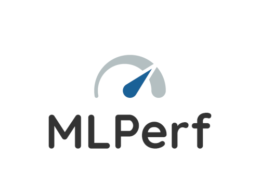OpenAI has launched GPT Builder, an exciting new tool that allows individuals to create their own customized versions of ChatGPT, OpenAI’s popular large language model (LLM) powered chatbot. With GPT Builder, users can specify the desired capabilities and characteristics of their chatbot using natural language, making it accessible even to non-technical users.
Building a Personalized ChatGPT
While building a GPT from scratch still requires careful attention and a time commitment from the user, it offers a simpler alternative to coding and programming a chatbot from the ground up. VentureBeat’s hands-on tests of the GPT Builder revealed that it took about 1.5 hours of interaction and guidance to create a custom GPT for answering PR emails. However, as users become more familiar with the tool’s nuances and learn how to obtain the desired results, the possibilities are immense.
Getting Started with GPT Builder
To gain access to the GPT Builder, users must be ChatGPT Plus subscribers ($20/month) or ChatGPT for Enterprise users with variable pricing based on the number of users and tokens required. Once subscribed, users need to refresh their browsers to see the dialog box from OpenAI containing the new ChatGPT interface.
In the left-side sidebar of the interface, there is a menu option labeled “Explore,” which provides access to the GPT Builder. Within the GPT Builder, users will find a helpful and intuitive interface. The left side of the screen features OpenAI’s GPT Builder bot, while the right side provides a preview of the GPT. By typing instructions and engaging in a back-and-forth interaction with the bot, users can refine and customize their GPT according to their specific needs.
The GPT Builder bot prompts users by asking what kind of GPT they want to build. Users can respond by entering long instructions, which can be thousands of characters in length, specifying the tasks they want their GPT to perform. For example, one could ask the GPT Builder to create an email reading and responding assistant. The bot takes these instructions and begins the process of building the custom GPT, which may take several minutes.
During the construction phase, the GPT Builder bot may ask users follow-up questions to gain a better understanding of the desired behaviors and responses. Users can also name their custom GPT and choose an accompanying logo. The GPT Builder leverages OpenAI’s DALL-E 3 image generation AI model to generate the logo based on the custom GPT’s capabilities and name. Users can request a revision if they are not satisfied with the initial logo generated.
Once the custom GPT is fully configured, users can move to the preview section and engage with their creation by typing commands or pasting text/documents for the GPT to utilize in carrying out its tasks. If users encounter performance issues or require changes, they can return to the text entry box, update their instructions, and wait for the GPT Builder to make the necessary revisions.
When users are content with their custom GPT, they can save it by clicking the green “Save” button. They also have the option to save the GPT as a private model, a semi-private link, or make it publicly accessible. Users can modify their GPT and adjust its capabilities at any time using the “Configure” tab within the GPT Builder.
By following these steps, users can create their own unique GPTs tailored to their specific requirements. OpenAI’s GPT Builder opens up exciting possibilities for individuals and organizations interested in developing personalized chatbots, empowering them to build without extensive technical expertise.










